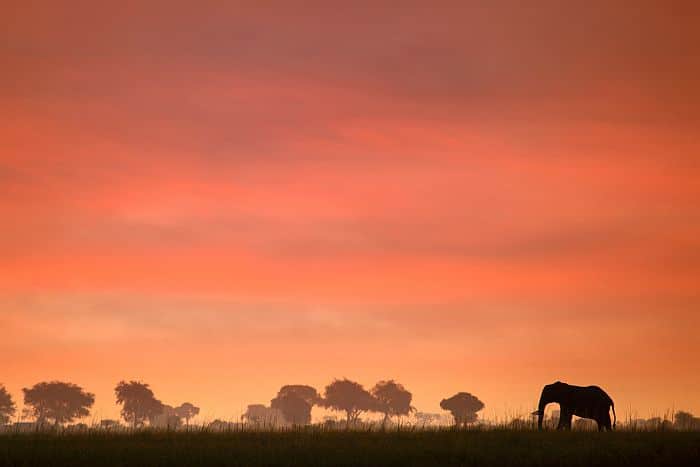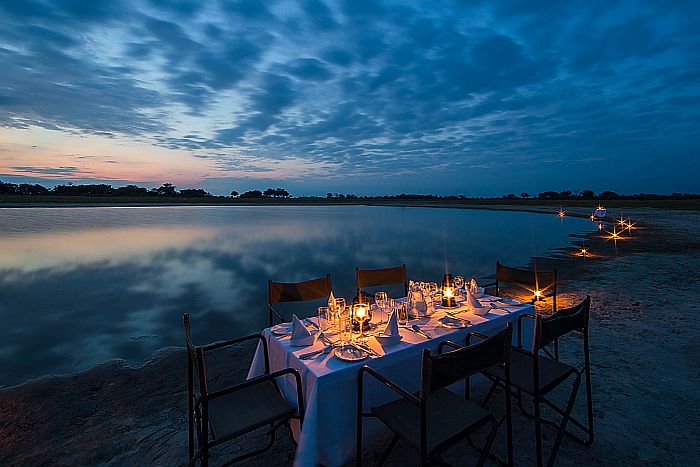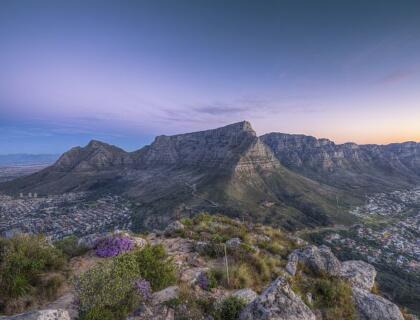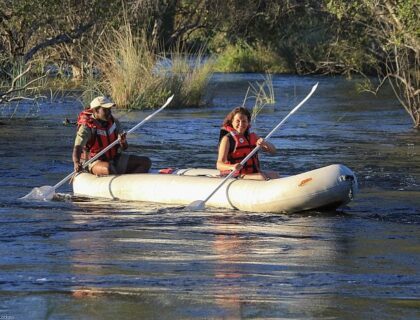The Okavango Delta in Botswana is the largest and most beautiful oasis in Africa, one that flows inland and not to the sea.
It is one of Africa’s great natural spectacles — a lush, green paradise amid the Kalahari Desert, with some of the richest wildlife in the world. But this seasonal flood has a twist: the water arrives months after the rains, and recent seismic shifts have subtly reshaped its patterns. So what causes the annual Okavango Delta flood? When does it happen? Why do some lodges have water all year, whilst other only have seasonal water during the flood. (Or not at all?)
Where do the Okavango Delta flood waters come from?
The Okavango Delta is a conundrum – a unique wetland system surviving on the sands of the vast Kalahari Desert in Botswana. The Okavango Delta’s water starts life far from Botswana, in the wet highlands of Angola, some 500km to the north of Botswana. Heavy summer rains there swell the Cubango River, which flows south through Namibia and – gathering ever more water – into Botswana.
Here, it becomes the Okavango River and meets a geological puzzle: a network of ancient fault lines – deep below the desert surface – that dictate its path.
Once across the first fault line, the river fans into multiple channels — most notably the Boro Channel, Maunachira Channel, and Khwai Channel — feeding the vast inland delta. Unlike other river systems, this delta doesn’t flow to the sea. Instead, it spreads into a vast fan-shaped luxuriant wilderness of floodplains, lagoons, forest and rivers, before eventually vanishing into the desert air. This verdant watery paradise in a desert country is naturally the ideal breeding ground for an incredible diversity of wildlife.
What stops it?
When the water meets the final two fault lines, the water is literally dammed and cannot go further. Beyond it lies now lies the dried-up salt pans of the Makgadikgadi and Nxai Pans.
(Before these fault lines emerged, the river flowed through the Okavango Delta, the Makgadikgadi pans and then into the Limpopo River to end in the Indian Ocean)
When does the Okavango Delta Flood – The Seasonal Delay
Something that can confuse people is that Botswana, including the Okavango Delta, has a summer rainfall (November to March), the Delta floods during the dry season (May to August).
This is because the floodwaters take months to travel the 1,000 km from Angola, creeping into the Delta at just one kilometre per day, slowed by the gentle gradient and dense vegetation. Plus, the rain falls during the summer and first seeps into the parched ground before the rivers start flowing.
The flood water first reaches the northern Delta (known as the Panhandle) in late April, then moves southwards. And makes its way steadily down into the Delta reaching many camps sometime in June or early July depending on their precise location. The flood peaks around August. As the dry season progresses into September and October, evaporation and plant absorption slowly shrink the floodwaters, leaving behind nutrient-rich soils.
(The evocative mokoro trips – a traditional dugout canoe made from an ebony or sausage tree – largely take place in these shallow seasonal flood plains of the Okavango Delta as it needs shallow water to be an effective means of transport.)
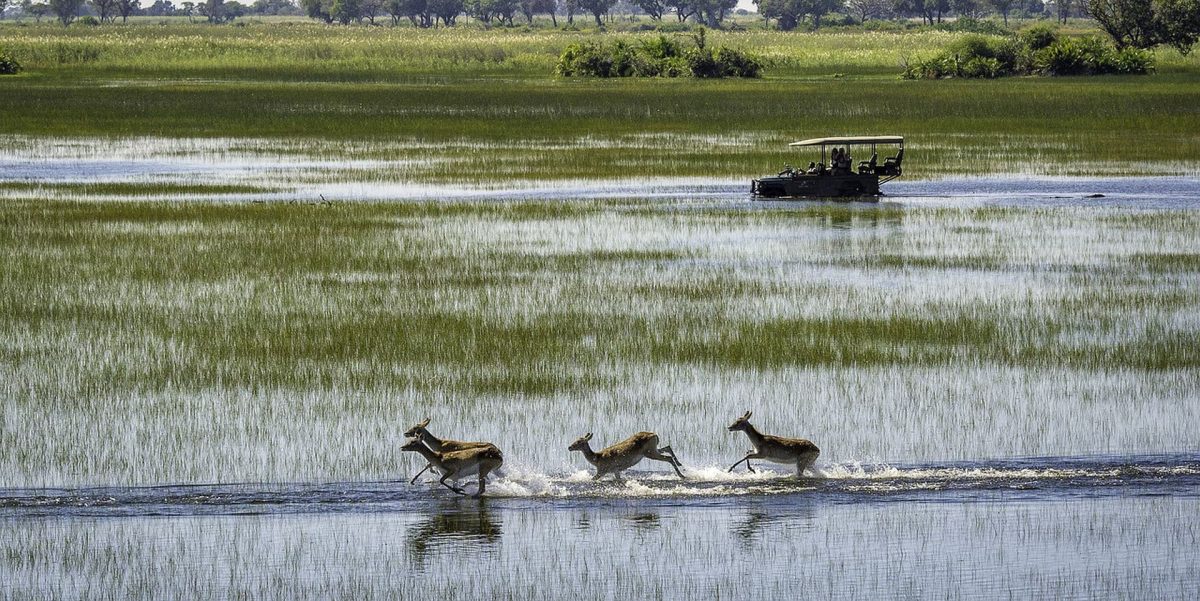
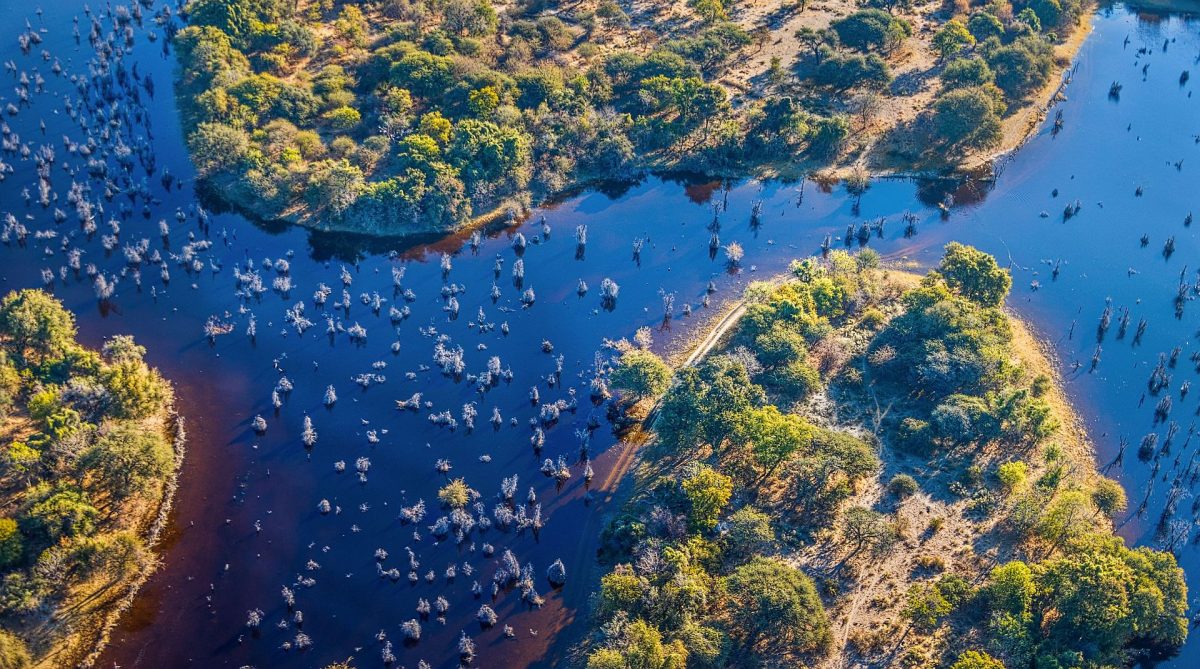

The 2017 Earthquake — A Subtle but Lasting Change
In April 2017, Botswana experienced a magnitude 6.5 earthquake near Moiyabana. Though far from the Delta, the tremor rippled through the region’s network of fault lines. Scientists believe this, combined with ongoing tectonic activity, altered some of the Delta’s sub-surface channels.
The result?
- Certain seasonal floodplains now receive less water than before.
- Whilst others, such as the previously seasonal Gomoti River now seems to have water year-round.
- Wildlife movements have shifted in response, with some dry season grazing areas becoming less reliable while others flourish.
This is a reminder that the Okavango is not static — it’s a living, shifting ecosystem shaped by both water and the earth beneath it.
Why do some camps have water all year round, and others only seasonally?
The precise location of a camp — even just a few kilometres — can dramatically change when it gets its water.
- Permanent Water Camps
In the northern and western stretches of the delta lie some deep river channels. These are fed first by the summer rains. And then by the Okavango Delta flood. So here you get some permanent Water Camps near the deep channels allowing for boat-based activities year-round and game walks on the surrounding islands. Thought the game-viewing here is more limited, the birding is excellent. Note: mokoro trips are not usually on offer at permanent water camps as the water is simply too deep to pole…
- Mixed-Activity Camps
Located where both land and water activities are possible for much of the year. These are often close to some of the deeper river channels further down into the delta, to the north of Moremi Game Reserve.
- Seasonal Camps
In floodplains that only receive water during the peak flood months. Broadly speaking, to the south of the Moremi are the seasonal camps. These focus on game drives in the green season. And then offer a mix of water and land activities as the flood comes in.
- Moremi & Khwai
In the south-eastern part of the Okavango Delta lies a slightly higher area of land, known as Chiefs Island. This forms part of the Moremi Game Reserve and Khwai Reserve. And the higher ground means that the waters never flood this area. Lodges here are predominantly ‘land camps’ offering game drives. However, some of them can offer seasonal water activities depending on their precise location.
Download our Guide to Botswana Safaris
Major Game Reserves, Sample Tours & Camps, plus the low-down on Best Time to Visit! Get our free guide hereAn Ever-Changing Delta
The Delta’s channels shift over time due to:
- Annual flooding creating and closing waterways
- Sediment build-up and vegetation growth such as termite mounds
- Hippo pathways carving new channels
- Seismic movements subtly redirecting water flow
As the Okavango Delta flood varies from year to year, no-one can say precisely when the flood waters will arrive.
This dynamic nature makes it essential to experience more than one area of the Delta if you want to appreciate its full complexity.
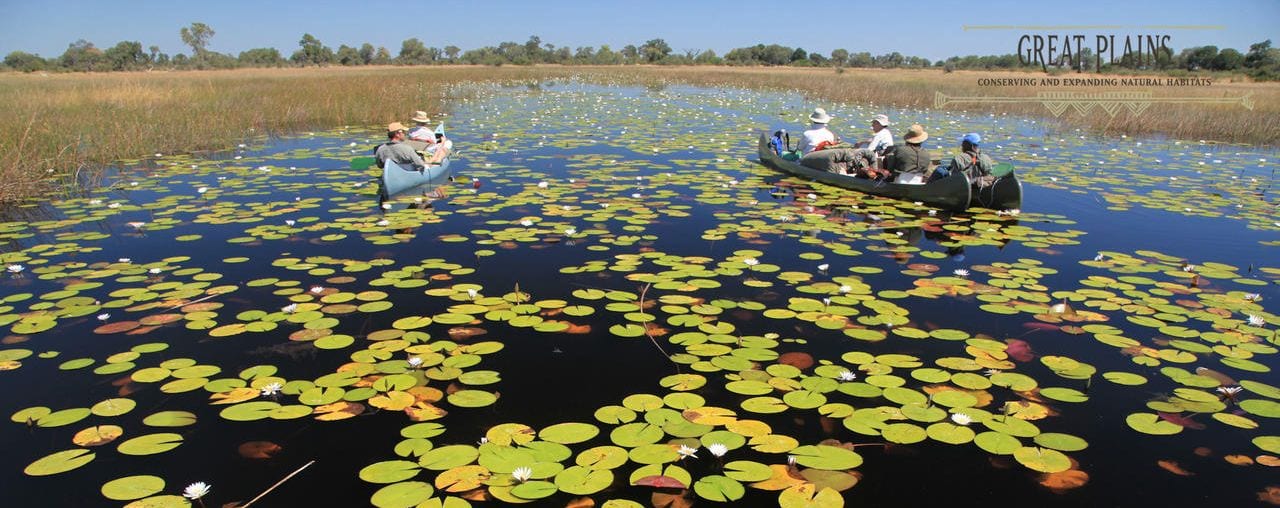
Unusual Fact
The Okavango Delta is so flat that the gradient is only about 1:3,500 — meaning the river drops just 60 metres over 250 km. This is one reason why the flood takes months to arrive.
Change is the essence of the Okavango Delta. The delta changes from year to year depending on flood levels. The watercourses are constantly changing due to annual flooding forging new channels as well as a combination of sediment, seismic activity and the construction of termite mounds. The hippos are continually opening up of new channels by grazing whilst other channels close up due to vegetation growth.
This dynamic nature leads to great diversity of water depth, soils, vegetation and animal distribution. The exact location of each camp dictates what activities are available and when. And this can vary within a short distance. IF you are booking well in advance, we’ll be able to match a particular camp to your needs.
So it follows that staying at two different camps in different habitats will give you the best feel for the dynamic mood of the Okavango Delta.
Other articles on Botswana Safaris
Tips for the safari visitor to Botswana
- Stay at more than one Camp
Try to stay in a mix of camps, such as a more land-orientated camp versus a more water-based camp. Two different camps in different habitats will give you the best feel for the dynamic mood of the Okavango Delta.
- If not booking in Peak Season
If you’re booking in the Green or Shoulder Season, make sure you have appropriate expectations and chat to us as to which lodges will be best for you.
Frquently Asked Questions about the Okavango Delta Flood:
When is the best time for a mokoro trip?
The best time for mokoros is June to August as the channels are full. But the water is still clear and moving. Plus, the cooler mornings and warm afternoons make for good poling conditions. Later, into September and October, the water levels drop and so some camps may need to halt their mokoro trips. However, this varies significantly from camp to camp.
Can you predict the flood level each year?
Not usually before you want to book! But broadly speaking if we have good summer rains, then the flood should be good to go. So, there may be still time to book a last-minute trip (say by booking in March). But some of the most popular camps will be booked up.
What’s the difference between permanent water and seasonal camps?
Permanent water camps don’t offer game drives as the water literally surrounds the camps. However, the animals also get restricted to limited island areas, so this can make for good game-viewing on foot, by mokoro or by boat.
Seasonal camps are ones which offer mostly game drives in the dry season but a mix of game drives, boating and mokoro trips during the flood.
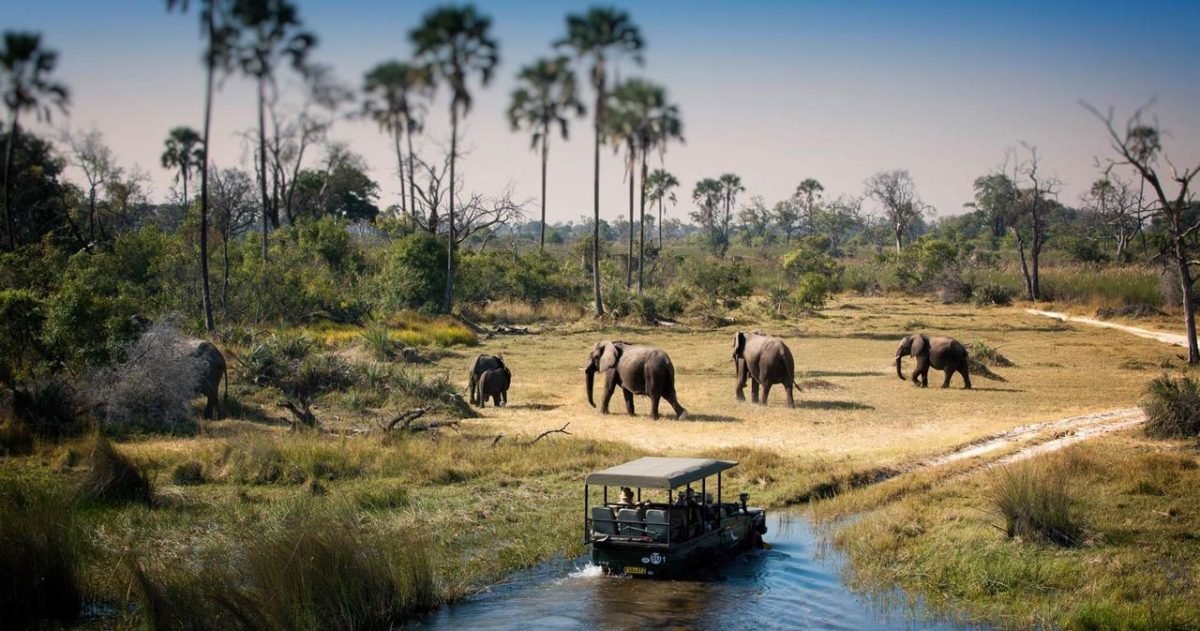
Experience the Delta’s Changing Face for Yourself
The Okavango Delta is never the same twice. Seasonal floods, shifting channels, and even earthquakes shape this watery wilderness. The only way to truly understand its magic is to see it for yourself!
Get Started in 3 Easy Steps:
- Tell Us Your Safari Goals – wildlife, birding, photography, or a mix.
- Share Your Ideal Travel Dates – We’ll match them to flood patterns.
- We Make It Happen – From flights to private guides, we arrange it all.
Why does the Okavango Delta flood? – was written by Kate from Cedarberg Africa
Cedarberg Africa is a specialist tour operator for Southern Africa including Botswana. With over 30 years of safari expertise, Cederberg Africa curates journeys that reveal the Delta’s complexity — matching you to the perfect camps and experiences for your travel style.
Contact us if you’d like a tailormade safari quote for Botswana.


